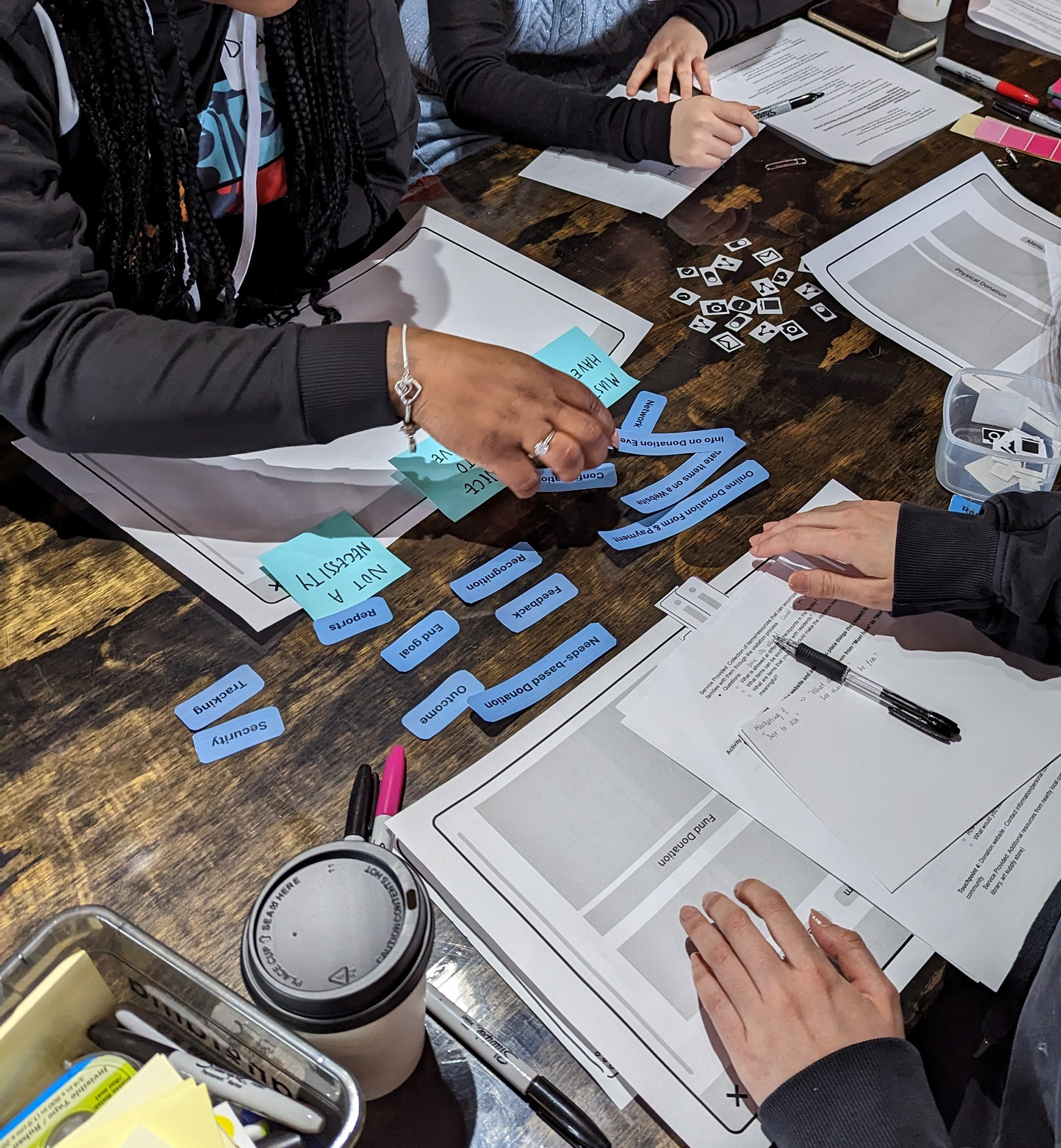Role
Stakeholder Research, Ideation, Content Creation, Team Coordination
Project Collaborators: Sue Kim, Macie Mancini, Sherry Xu, ShaoBo Zhang
context
After the success of “Becca’s Place,” a child-friendly early learning space in the Cook County (IL) Department of Corrections, Division 10 facility, our project sponsor, Liz McChesney, partnered with our studio to identify opportunities to scale the project using service design principles. My team represented our primary stakeholders, Donors and Contributors.
deliverables
Project EM-PACT is derived from our directives to foster empathy and to impact by encouraging learning and understanding in a safe space. Our final deliverable was a digital prototype including:
Story-Keeping Website
A collection of self-submitted anecdotes from system-impacted individuals and families serving as a platform to humanize the contribution process and bring awareness to the plight of mass incarceration
Facebook Donation Group
A dedicated communication center on an established platform to facilitate requests for donations of goods and services and stay connected with on-going projects
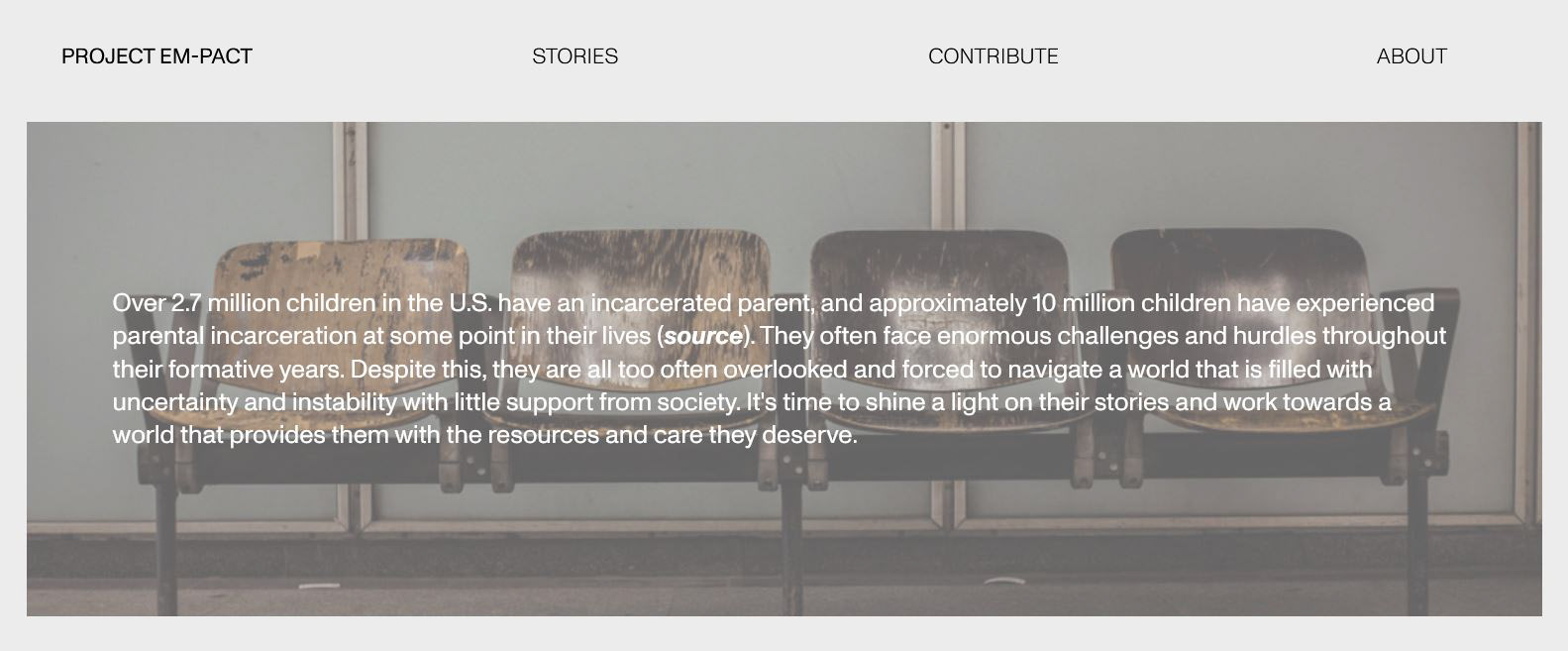
Story-keeping Website
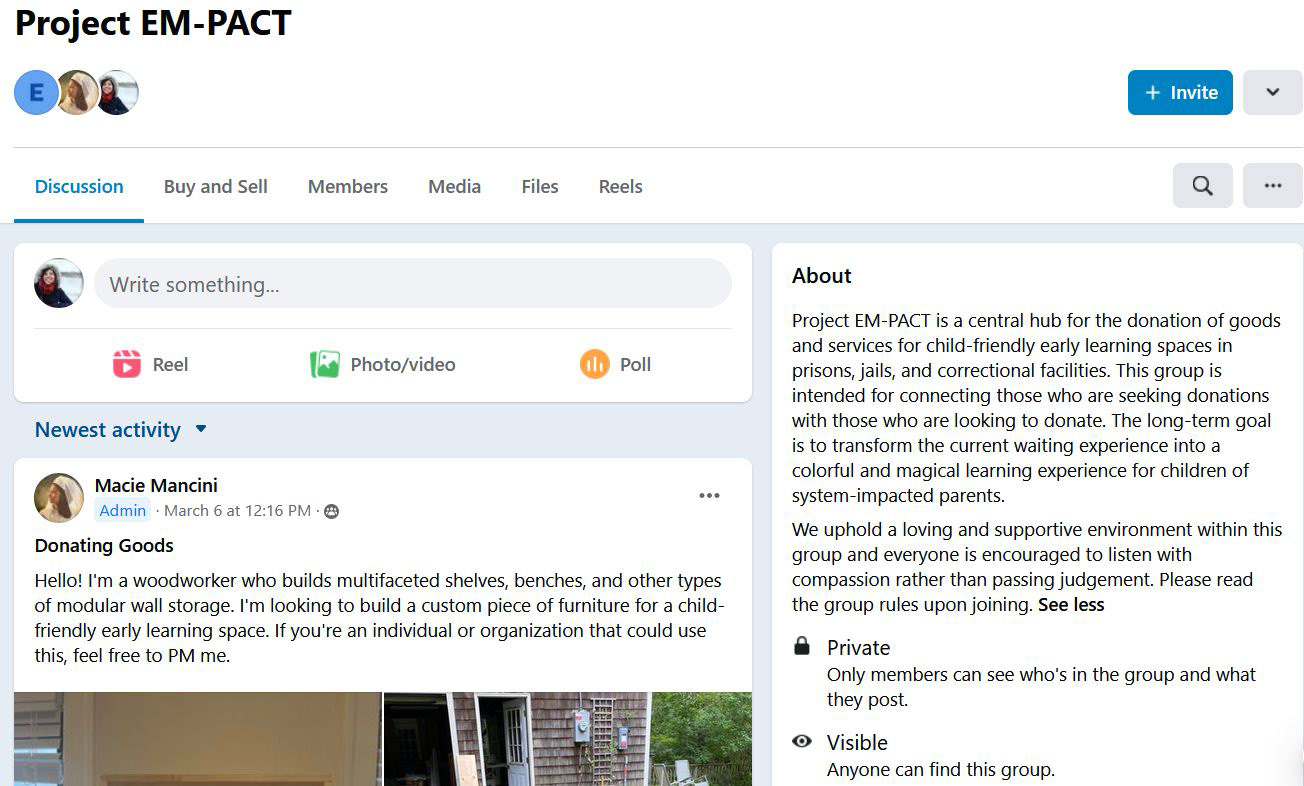
Facebook Donation Group
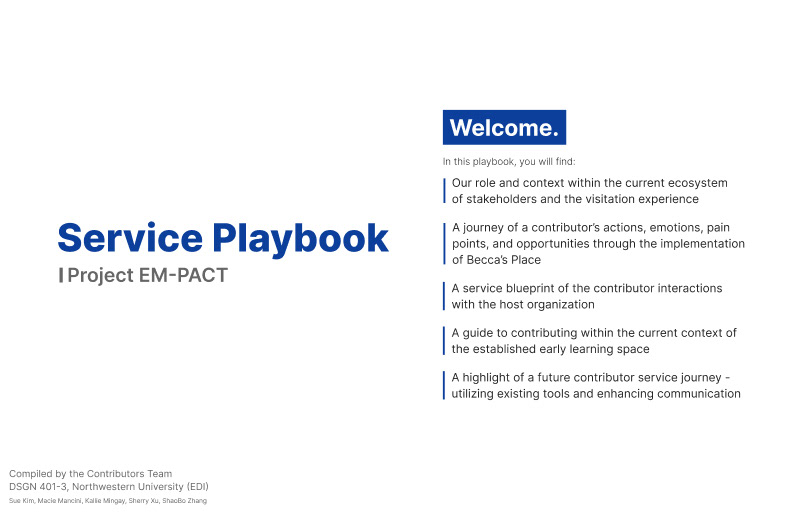
An overview of the playbook contents
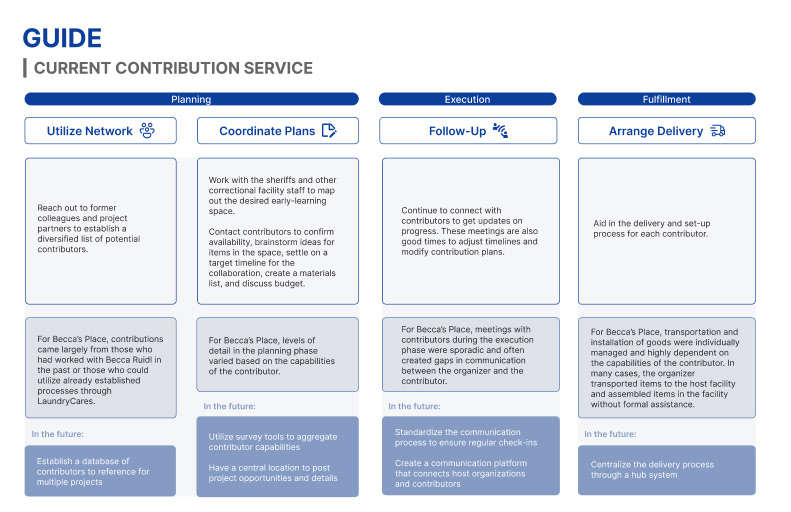
Guide to the current service (Becca's Place)
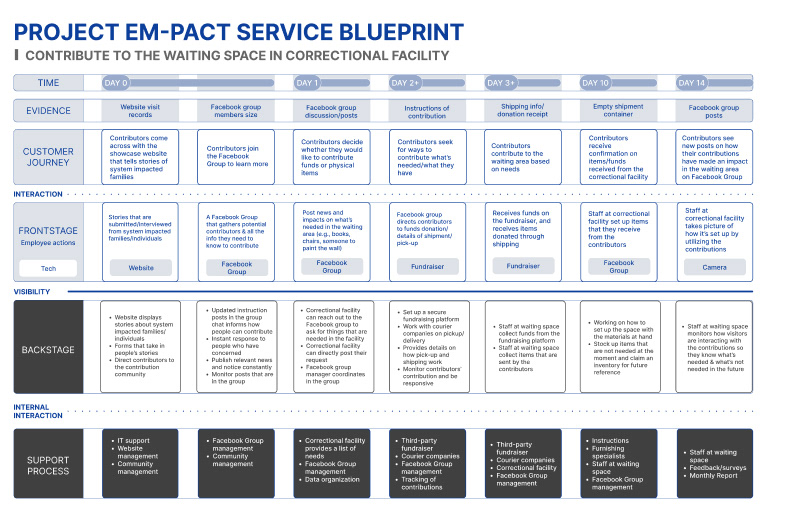
Service blueprint for contributors to a new space using Project EM-PACT tools
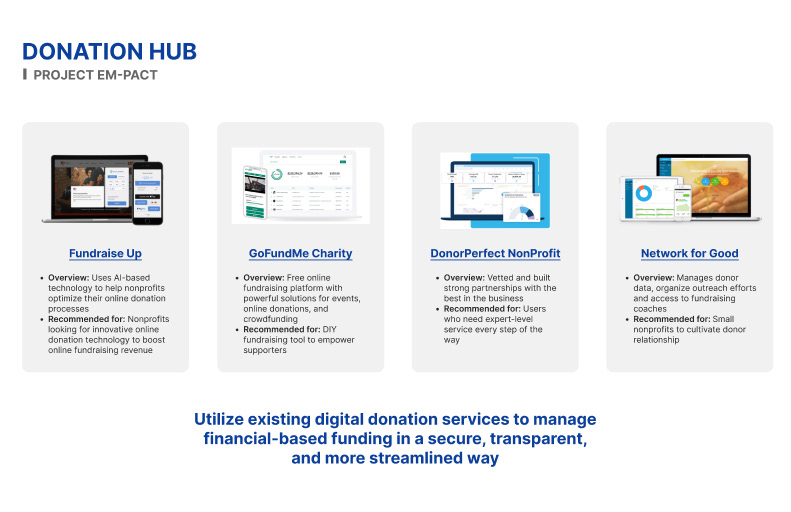
Existing platforms to help manage donations & contributions
Service Playbook
In addition, we formalized our research findings and concepts into a service playbook which included stakeholder maps, journey maps, service blueprints, instructional guides, and considerations for future development.
Takeaways
Trauma-informed design is not just a one-off lecture.
It is a process that requires constant assessment and re-assessment of the work you are doing, looking critically at the ways in which you and your work affect others and how it may affect them in the future, advocating for your own and your team’s well-being, and making the necessary shifts and changes to be more trauma-responsive.
There are more stakeholders than those just at the surface.
To fully understand the intricacies of a service, you must understand the web of directly- and indirectly-involved parties – where they intersect and how they work together.
Process
Research
We began by broadly looking at different waiting experiences, noticing the actions and reactions of people, objects that aided and detracted from the service at hand, and the environmental factors that contributed to the space. This set a baseline for our work during the quarter as we came to understand the more complex and emotionally-involved waiting experience for children and families in prisons, jails, and correctional facilities.
Following a similar observational structure, teams researched traditional and non-traditional early learning spaces from the perspective of their respective stakeholder group. Our team was able to observe a children’s celebration event and talk with librarians at the Evanston Public Library about the logistics involved with special events as well as their day-to-day operations and needs.
We used the AEIOU framework and a card sort activity with parents and library staff to examine the physical and emotional environment and to discern preferences of objects, like furniture, craft materials, and books, in building a child-friendly early learning space, respectively.
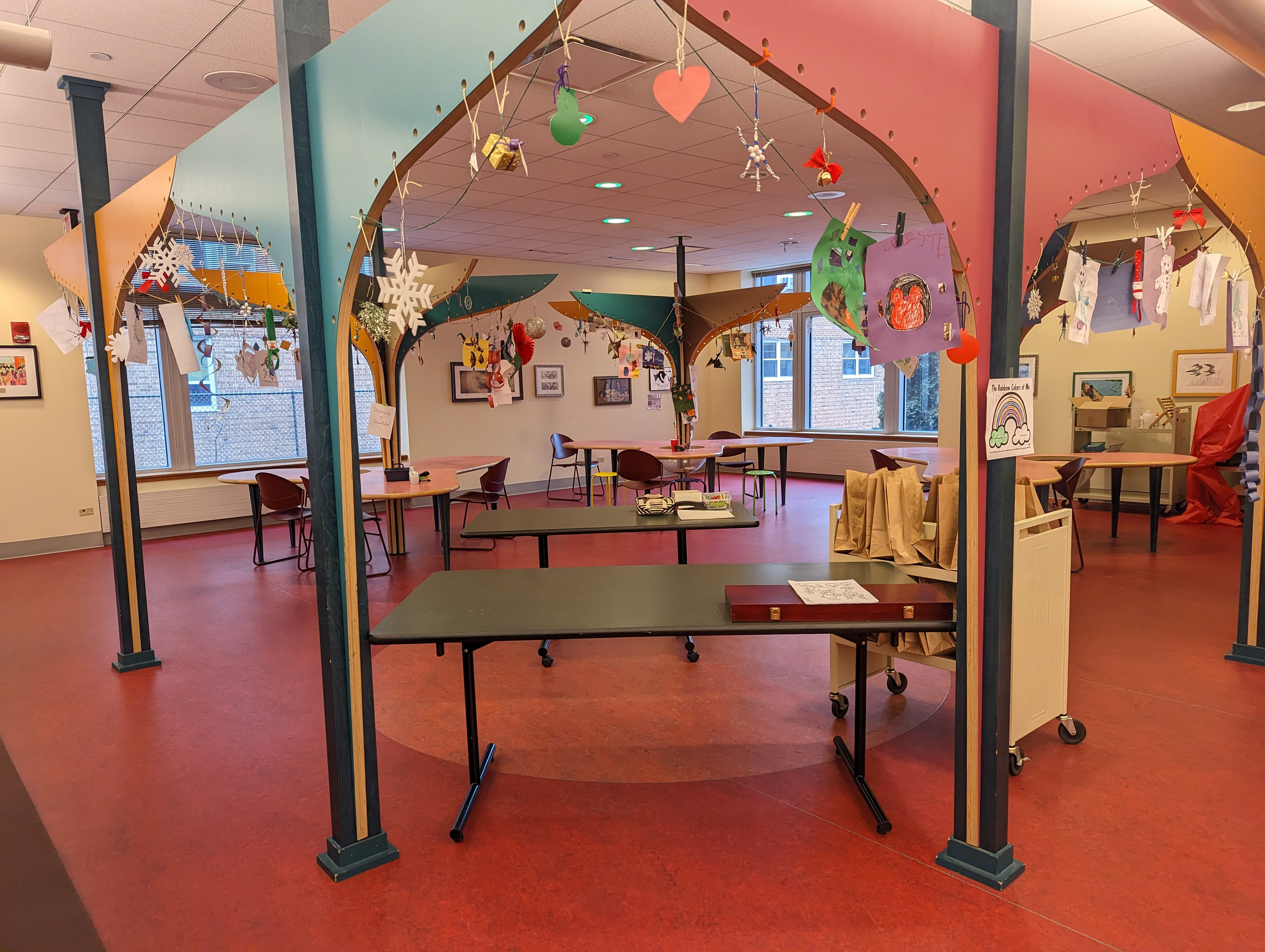
Arts & Crafts Area
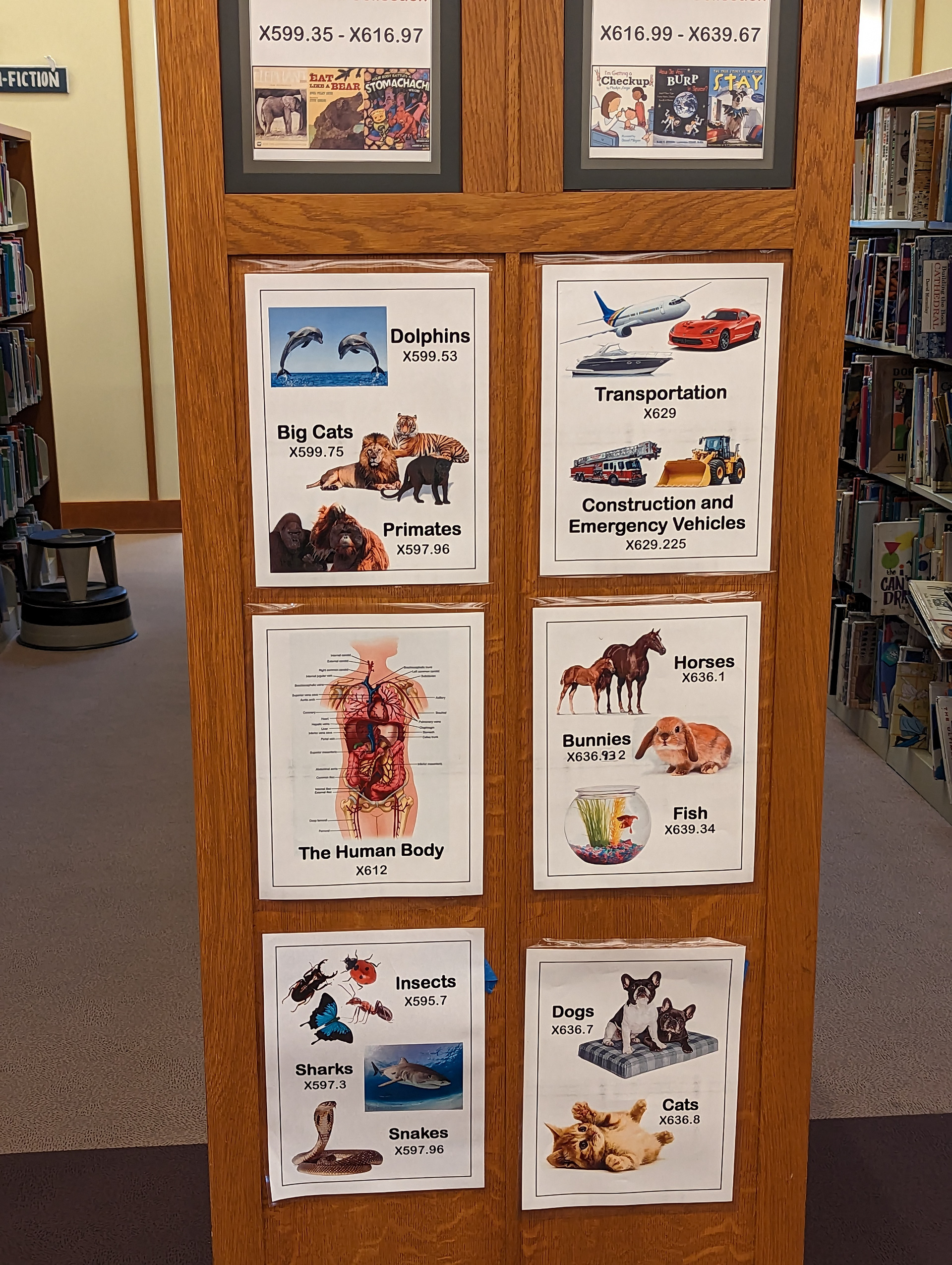
Use of Text & Visuals
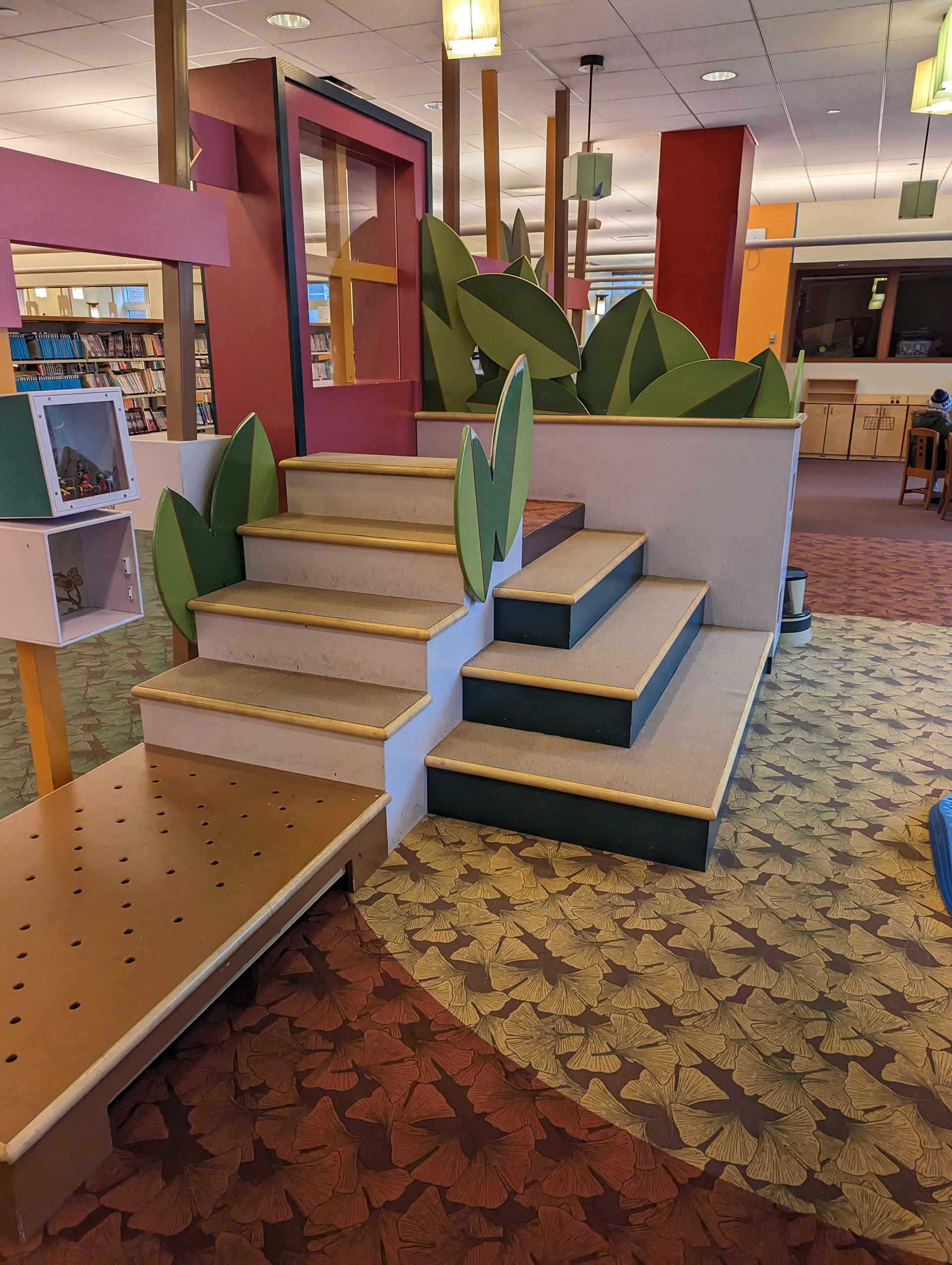
Interactive Elements
Images from the Evanston Public Library Main Branch
As we narrowed focus, we were able to have several discussions with our designated project collaborators to gain insight into the specificity of donations, contributions, and the positives and pain-points that exist in the current system as well as the obstacles of creating and developing these waiting spaces through the lived experiences of system-impacted folks.
Our project collaborators:
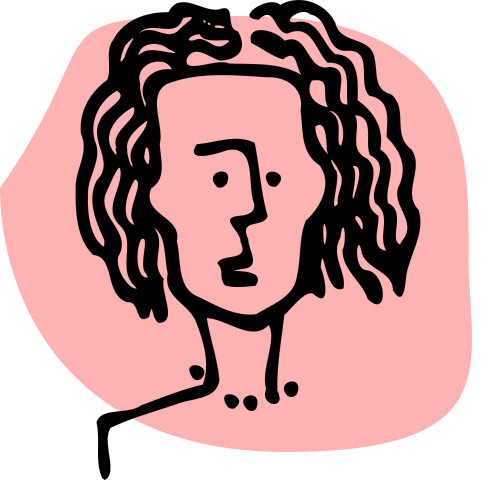
Sue G., VP Custom Learning Solutions | Lakeshore Learning
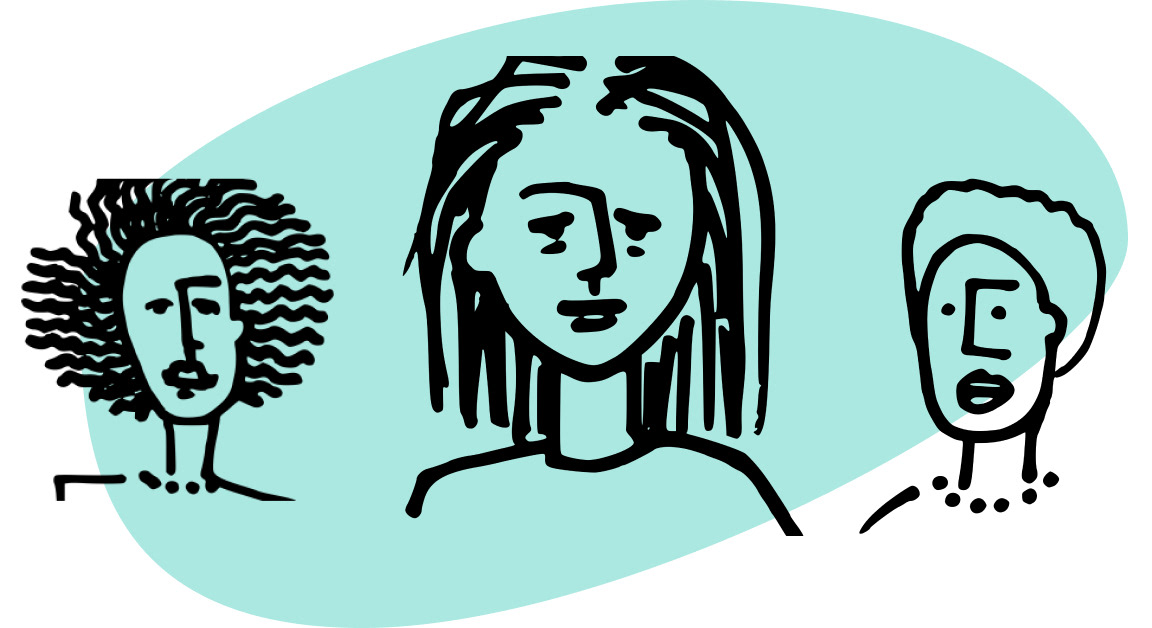
Lydia, Dyanna, Sandra, & Colette | Women's Justice Institute

Steve M., Muralist
Sketch Images by @lariniehl,1000faces
Synthesis
From our secondary research, observations, and discussions with project collaborators, we gleaned three main insights:
1) Contributors have varied schedules and often coordinate with host organizations differently
with regard to time and capabilities
2) Contributors donate what they can, but the process is relatively autonomous and lacks support
in the delivery procedure especially for the individual contributors
3) The current contribution process involves utilizing one’s network to find contributors,
coordinating, following up, and arranging delivery of contributions
Ideation
Considering the current service as defined by the process to create “Becca’s Place” – which relied heavily on our project sponsor’s generous network and personal oversight, there was a lot of room for exploration to find a scalable solution. Given our research insights, we knew we wanted to center the needs for organization and communication to help standardize the process and alleviate some of the organizational burden taken on by our project partner.
We brainstormed solutions on a variety of scales and timelines from designing a poster and/or donation point to encourage community engagement with the cause to developing a fully-integrated digital hub for contribution data and process management.
We were also able to have a brief co-design session with women from the Women’s Justice Initiative (WJI) to exchange ideas and get feedback and build on our initial concepts. Within this session, we created mood boards for a future space and experimented with information structure and hierarchy for digital platforms using paper prototypes.
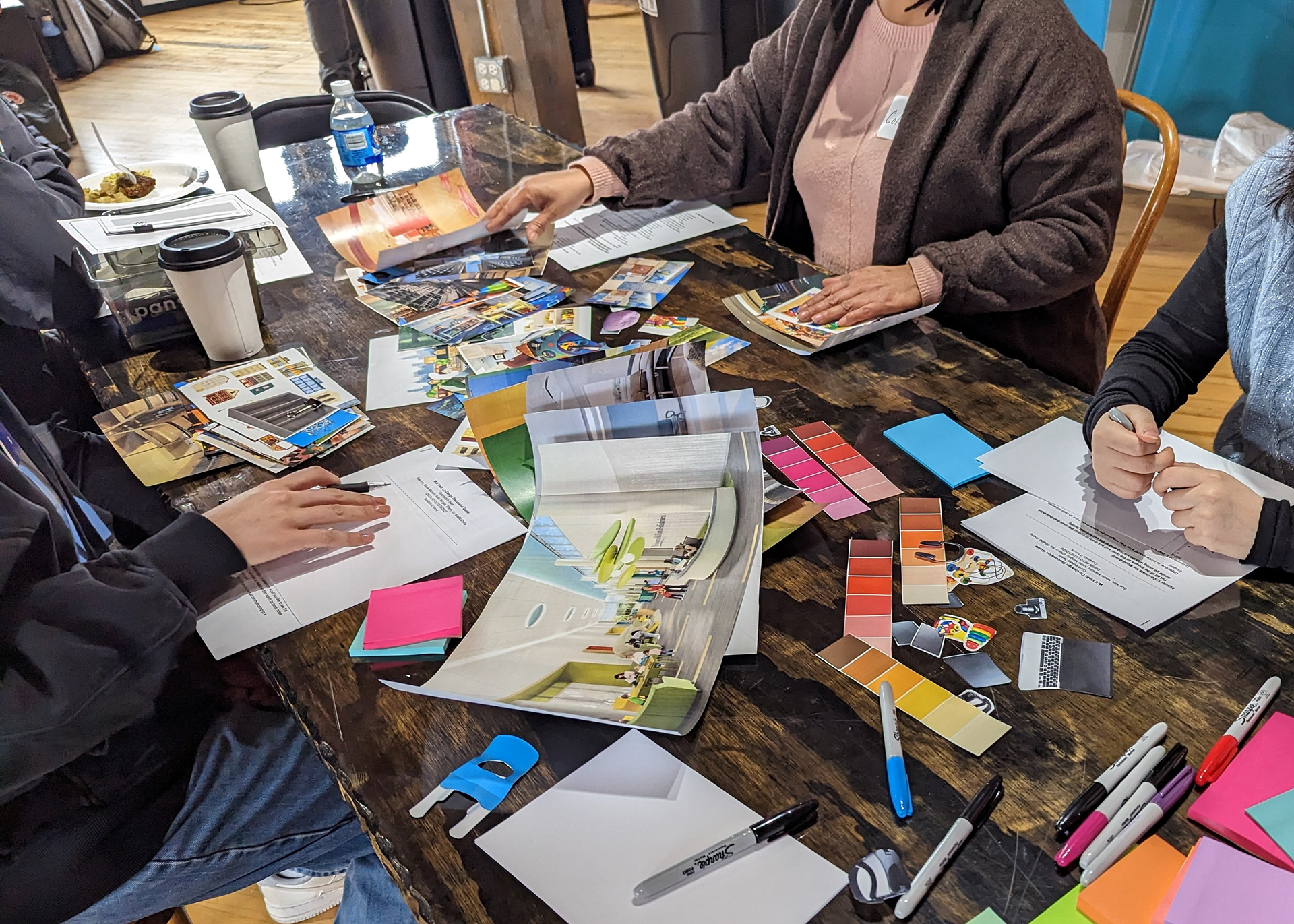
Mood Board Creation with Colette (WJI)
